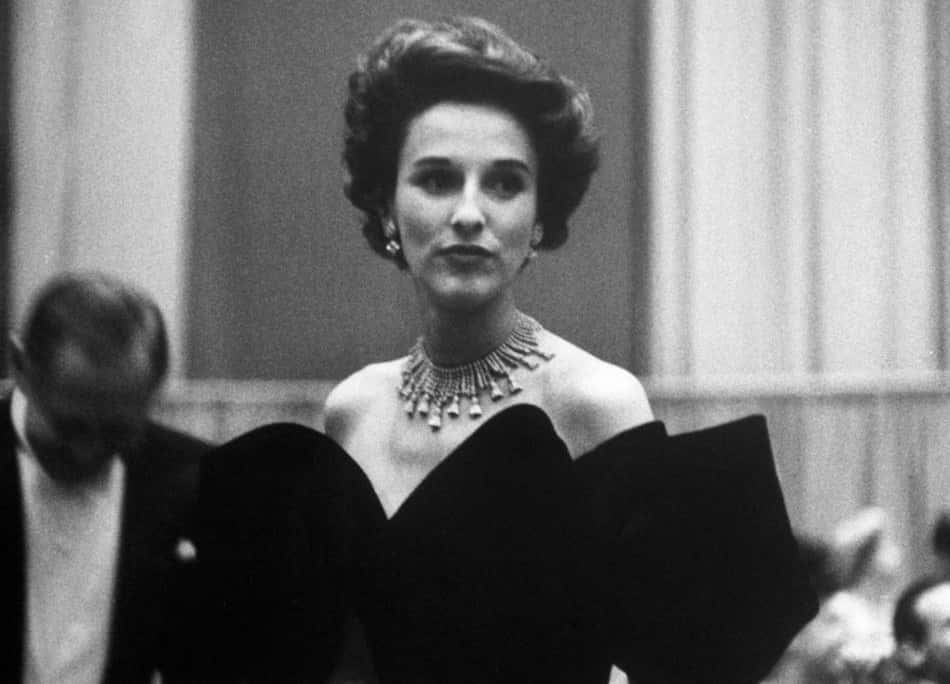Babe Paley, a 20th-century socialite, captivated the world with her impeccable style and slender figure. But her glamorous exterior concealed a complex relationship with food and body image. This article delves into the mystery surrounding Babe Paley’s diet, exploring how societal pressures likely shaped her choices and the lasting impact they had on her life and health.
The Allure and Anguish of the “Babe Paley Diet”
While the specifics of Babe Paley’s diet remain largely shrouded in speculation, her story offers a glimpse into the extreme pressures faced by women in her social circle, where thinness was not just desired – it was expected.
Early Life and Societal Expectations:
Born into affluence, Babe Paley was always in the spotlight. As a debutante, maintaining a certain standard of beauty was practically a prerequisite. This upbringing probably had a significant impact on her self-perception and relationship with her appearance.
A Life-Altering Event:
A serious car accident left Paley with visible facial injuries. While reconstructive surgeries helped, this traumatic experience likely fueled a desire to control her appearance in other ways, perhaps contributing to her focus on weight.
Seeking Extreme Measures:
In her quest to manage her weight, Paley turned to Dr. Ethel Jacobson, an endocrinologist known for her unconventional, and some might say, extreme methods. While the exact details of the “Babe Paley Diet” remain elusive, rumors persist that it was incredibly restrictive and may have even involved the use of amphetamines, which were sometimes prescribed for weight loss at the time.
The Unrealistic Standards of the Time:
During Paley’s era, the pressure to be thin, particularly among women in high society, was immense. This obsession with thinness was reflected in fashion, magazines, and societal attitudes.
A Tragic End and a Lasting Lesson:
Paley’s preoccupation with her weight continued throughout her life, tragically ending when she succumbed to lung cancer in 1978. Her story serves as a stark reminder that extreme diets can have devastating consequences and that prioritizing well-being should always come first.
Beyond the Plate:
The “Babe Paley Diet” represents more than just a weight-loss regimen. It reflects the insecurities Paley likely harbored and the immense pressure she felt to conform to an often unattainable beauty standard. Her story encourages us to challenge unrealistic ideals and prioritize health and self-acceptance.
The Swans’ Slim Secrets: Maintaining Elegance in the Public Eye
The “swans,” those impossibly chic New York socialites, seemed to effortlessly embody elegance throughout the 1960s and ’70s. But their slender figures, often envied and admired, were likely maintained through a combination of privilege, societal pressure, and potentially harmful practices.
The Pressure Cooker of Expectations:
Imagine a world where magazines exclusively showcased incredibly slender models, constantly reinforcing the message that thinness equated to beauty, success, and social standing. That was the reality for women like Babe Paley and her fellow swans. The pressure to fit this mold was immense.
A Lifestyle of Privilege:
The swans’ privileged lifestyles undoubtedly played a role in their ability to maintain their figures. Personal chefs could prepare precisely portioned meals tailored to their dietary needs. Couture wardrobes, custom-fitted to perfection, accentuated their silhouettes and concealed any perceived flaws. And ample leisure time allowed for activities like tennis or swimming, further contributing to their svelte physiques.
The Role of Restrictive Diets:
Of course, no discussion of the swans’ slimness would be complete without addressing the rumors of restrictive diets. Babe Paley’s association with Dr. Ethel Jacobson, known for her controversial weight-loss approaches, fueled speculation about the lengths to which some women might have gone to achieve their desired figures. Some theories even suggest the use of amphetamines, highlighting the potentially dangerous extremes of the era’s beauty standards.
The Hidden Costs of Perfection:
Tragically, the pursuit of such an unattainable standard of beauty often came at a cost. Paley’s relentless focus on her weight is believed to have contributed to her untimely death. Smoking, another common practice among the swans, was often seen as an appetite suppressant, further endangering their health.
A Legacy of Complexity:
The allure of the swans continues to fascinate, but it’s crucial to acknowledge both the glamour and the potential dangers of their pursuit of an often-unrealistic ideal. Their stories remind us to approach narratives of beauty and elegance with a critical eye, recognizing the societal pressures and potentially harmful practices that often lurk beneath the surface.
Have you heard of the well-known Ronald Stegall who was also a real estate developer in the United States?
Also, did you know that William Shatner was the man behind some popular toys in the ’80s? The ’80s were the golden era of toys, after all. Speaking of net worth, Dionne Warwick, the singer, has a huge net worth.
If you are a baseball fan, you might know the most expensive Ken Griffey Jr. baseball card ever sold, do you? Moreover, if you are a Stephen Hawking fan, you must be wondering when his funeral was.
Additionally, how many of you ever wondered about the meaning of Pomp and Circumstance? We all know this song, don’t we? And, of course, who can forget the graceful Jane Fonda of the ’80s?
A Look Back at the “Babe Ruth Diet”: Fueling a Legend
Babe Ruth, the legendary baseball player known for his towering home runs, was also famous for his equally impressive appetite. But what exactly did this sports icon consume to fuel his record-breaking performances? Let’s step back in time and examine the “Babe Ruth Diet,” a fascinating, if somewhat alarming, glimpse into the dietary habits of a bygone era.
A Mountain of Food:
Imagine a daily diet consisting of mountains of red meat, endless hot dogs, sugary drinks galore, and you’ll start to get a picture of Babe Ruth’s eating habits. Two steaks, multiple hot dogs, and a hearty slice of apple pie – all in a single day – were not uncommon for the Sultan of Swat.
The Context of the Times:
While such a diet would undoubtedly raise eyebrows today, it’s important to remember that Ruth played in an era long before the advent of sports science and modern nutritional understanding. People simply didn’t have the same knowledge we have now about the long-term health implications of consuming large quantities of processed foods, red meat, and sugar.
Fueling Those Home Runs?
Some speculate that Ruth’s massive caloric intake, however unhealthy, might have actually provided him with the sheer energy he needed to power his incredible athletic feats. After all, he was a man of considerable size and strength, and his performances on the field were nothing short of legendary.
What We Know About Ruth’s Diet:
Records of Ruth’s exact dietary intake are limited, but anecdotes and accounts from the time paint a picture of a man with a legendary appetite:
- Red Meat: Steak was a staple, with Ruth reportedly consuming two-and-a-half pounds of rare beef steak with a whole bottle of chili sauce almost daily.
- Hot Dogs: Whether as snacks or part of larger meals, hot dogs were another favorite of the Great Bambino.
- Raw Beef: Some accounts even suggest that Ruth indulged in raw hamburgers on occasion.
A Cautionary Tale for Today:
Needless to say, medical professionals would strongly advise against emulating the “Babe Ruth Diet” today. The high intake of red meat, processed foods, and sugar has been linked to numerous health problems, including heart disease, stroke, type 2 diabetes, and some types of cancer.
In Conclusion:
The “Babe Ruth Diet” offers a fascinating glimpse into the dietary habits of a bygone era. It’s a reminder of how far we’ve come in our understanding of nutrition and the importance of a balanced diet – not just for athletes, but for everyone.
- Jerry McSorley’s Post-Divorce Life: New Beginnings - July 16, 2025
- The Rise and Fall of the New Haven Nighthawks: A Minor League Hockey Legacy - July 16, 2025
- Unlock Jerry McSorley’s Career Highlights: Eye Tax Inc.’s Solar Success - July 16, 2025
















